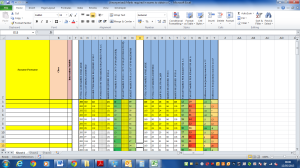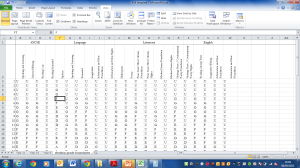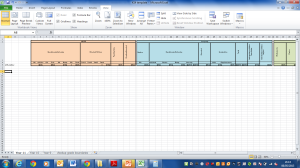We have less than a week with Year 11 left in our school!
For some, that is a cause for celebration; others of emotional goodbyes; for yet others, it is a moment of terror asking themselves “Have we completed the course yet?!”
And with the OCR deadline for CAT marks looming on Wednesday, this is the weekend when finally and completely it is possible to say to all our students:
This is where you stand. These marks are safe and banked (subject to external moderation).
And it is – broadly – possible to take the next step and say (with all the caveats and warnings about Ofqual, Michael Gove and grade boundaries after the GCSE fiasco last year)
These are the marks you need to get this grade overall.
I am basing the maths here on the June 2012 OCR Grade Boundaries for raw scores which can be found here. I ummed and ahhed about perhaps adding a couple of marks to the boundaries to insulate us against the vagaries of Ofqual… but I decided that there was little to be gained from trying to second guess what appears to be a particularly volatile set of politics so left it as it was.
With the additional tweak (a particularly geeky and SLT-friendly tweak!) of colour coding on a scale of 0-80 in English and Language and 0-40 in Literature, we have a nice visual record of who is more and less likely to obtain the A and C grades. Thanks to Excel, the deeper the shade of green, the closer the student is to the boundary; the deeper the shade of red, the further away they are.
We also put our students doing Literature in to take the Prose from Other Cultures examination in January. so the final two columns simply compare the scores required to get a C or an A with what they obtained in January. Again, it is colour coded: green shows that they need less than they obtained in January; red shows that they need to raise their game. The deeper the shades of colour reflect how far from their January achievement they are: a nice deep green suggests that they need actually far less than they obtained in January to reach that threshold; a deep red suggests they need to up-their-game a lot!
If this would be useful to anyone out there, the (appropriately anonymised) document is linked here with the OCR grade boundaries.
(Anonymised) Marks required in exams to obtain a C
Students at this point respond very well to conversations that go along the lines of:
“Look, you only need 38 marks for a C”
“You need less to get C than you got in your last exam”
“You only need 27 for a C. But you could get higher!”
Those conversations seem more positive than “Well, I suppose it is mathematically possible”!


